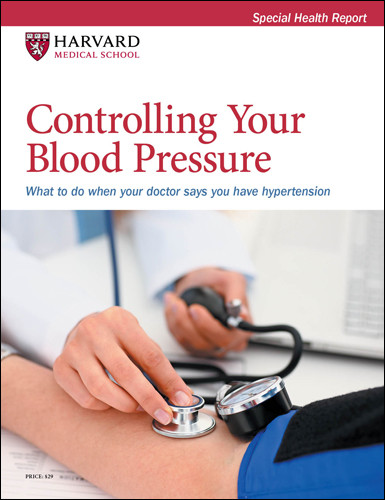Why choose bypass surgery over stents?
Ask the doctor
 Q.
I take medications to treat my high blood pressure and high cholesterol, but I still feel chest pain whenever I walk uphill. A cardiac catheterization showed serious narrowing in all three of my main heart arteries. Should I receive stents, or would it be better to have bypass surgery?
Q.
I take medications to treat my high blood pressure and high cholesterol, but I still feel chest pain whenever I walk uphill. A cardiac catheterization showed serious narrowing in all three of my main heart arteries. Should I receive stents, or would it be better to have bypass surgery?
A. Chest discomfort that occurs with exercise, known as stable angina, is quite common — about half a million cases are diagnosed in this country each year. As the testing you've had confirms, the pain you feel during exertion stems from the narrowing of your coronary arteries. The resulting reduced blood flow, which decreases the supply of oxygen to your heart muscle, leads to the discomfort.
The medications you're taking are the first-line treatment for coronary artery disease (see "Does a coronary stent make sense for stable angina?" in the March 2024 Heart Letter). But as that article explains, additional treatment makes sense when symptoms persist, as is the case for you. Improving blood flow to your heart muscle (known as revascularization) can be done two ways: with stents or with bypass surgery.
To place a stent, an interventional cardiologist passes a catheter through an artery in the upper thigh or the wrist, maneuvers the tiny mesh tube up to the heart, then opens the blocked vessel with a tiny balloon, using the stent to prop the artery open. The alternative is open heart surgery, in which a cardiac surgeon uses an artery or vein taken from elsewhere in the body to reroute blood around the blocked artery. This is known as coronary artery bypass grafting, also referred to as CABG (pronounced "cabbage") or bypass surgery.
In addition to relieving angina symptoms, another goal is to prevent a future heart attack or heart-related death. Large, randomized trials comparing these two approaches have found that for most people, the results are similar in terms of those future risks. However, people with diabetes and more than two narrowed arteries appear to have a lower risk of death with bypass surgery. For people without diabetes, the location and complexity of the blockages can be a factor. People with a blockage in the left main coronary artery (which supplies the heart's main pumping chamber) are often but not always treated with bypass.
Most hospitals take what's called the "heart team" approach, in which both an interventional cardiologist and a cardiac surgeon review the person's history and test results. Other health conditions, especially kidney disease, lung problems, and frailty, may affect their recommendations. Then, they discuss their findings with the patient, explaining the risks and benefits of the different options. I urge you to seek out this approach, which is also referred to as shared decision making.
Image: © Pixologicstudio/Science Photo Library/Getty Images
About the Author

Christopher P. Cannon, MD, Editor in Chief, Harvard Heart Letter; Editorial Advisory Board Member, Harvard Health Publishing
Disclaimer:
As a service to our readers, Harvard Health Publishing provides access to our library of archived content. Please note the date of last review or update on all articles.
No content on this site, regardless of date, should ever be used as a substitute for direct medical advice from your doctor or other qualified clinician.
















